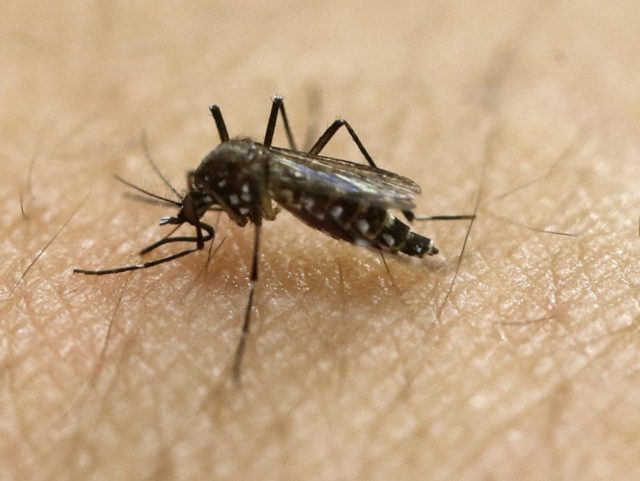Medical experts tracking the spread of the Zika virus throughout the continental United States warn that the conditions for rapid mosquito reproduction necessary for an outbreak exist throughout the Gulf Coast states and stretch as far north as Maryland.
This estimate, published in graphic form at the Wall Street Journal on Tuesday, is based on the population centers of aedes aegypti mosquitos, the species known to spread Zika. These mosquitos require small pools of stagnant water and extreme humidity to reproduce and have already made their way north from South America, where their bites infected thousands in Brazil, Colombia, and Central America.
Hotspots for aedes aegypti reproduction also exist in California.
The government of Texas has begun to take precautionary measures to avoid locally-transmitted Zika. Texas has documented Zika cases, but all have been in individuals who traveled to affected areas in Latin America.
Currently, cases of locally-transmitted Zika have only been documented in Florida, and most in the Miami or Miami Beach area. The Wall Street Journal reports that experts have confirmed 43 cases of locally-transmitted Zika.
One of the 43 cases has been documented in northern Pinellas County, near the Tampa Bay area. “This person did not travel to an infected area with Zika; we are looking at a number of locations. Hopefully something good will happen and it will just be a single case. But if we do find out, what we will do is we will be very aggressive,” Governor Rick Scott confirmed last week.
Authorities have been hesitant to provide any information on the Pinellas County case. A local CBS affiliate has confirmed that the patient is a firefighter in Tampa, which expands the scope of the Zika-infected area into Hillsborough County. CBS confirmed that all firefighters at the station with the Tampa patient are being tested for Zika, and extra precautions against bug bites are in place.
The spread of Zika north is of great concern to medical experts because of the potentially devastating effects of the virus on unborn children and infants. While most adults do not experience symptoms while carrying Zika and most who do experience only mild symptoms like body aches and rashes, pregnant women must take extra care in avoiding Zika.
The virus attacks the developing neurological systems of unborn children, causing severe birth defects that limit both the physical and intellectual abilities of the child and can kill the child before it is born. The most common Zika-related birth defect is microcephaly, a condition in which a child is born with a skull too small for his or her brain, crushing the brain.
The virus attacks the developing neurological systems of unborn children, causing severe birth defects that limit both the physical and intellectual abilities of the child and can kill the child before it is born. The most common Zika-related birth defect is microcephaly, a condition in which a child is born with a skull too small for his or her brain, crushing the brain.
The U.S. Centers for Disease Control (CDC) have warned pregnant women to avoid unnecessary travel to the Miami-Dade County area, and women living in the affected neighborhoods of Wynwood and Miami Beach have been warned to wear long sleeves outside and use insect repellent liberally.
Meteorological experts warn that tropical storms and hurricanes could help spread the virus. The humid weather and torrential rains may leave pools of stagnant water in which aedes aegypti mosquitos can lay eggs. The Gulf coast is currently facing three storm systems: Tropical Depressions 8 and 9 and Hurricane Gaston. The tropical depressions may evolve into hurricanes as they pick up speed in the warm waters.

COMMENTS
Please let us know if you're having issues with commenting.